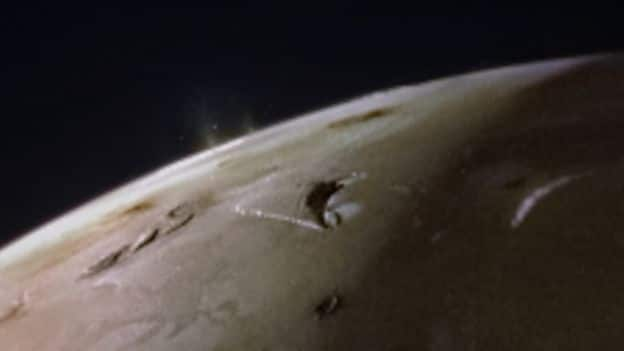
NASA's Juno probe discovers lava lakes on Jupiter's moon Io
What's the story
NASA's Juno mission, initially aimed at studying Jupiter, has uncovered "fire-breathing" lava lakes on the planet's moon Io. The discovery was facilitated by the Jovian Infrared Auroral Mapper (JIRAM), an instrument developed by the Italian Space Agency. JIRAM captured infrared images of these lakes scattered across Io's surface, revealing hot rings of lava encircling a cooler crust.
Volcanism
Infrared images reveal Io's volcanic activity
The infrared images captured by JIRAM display bright white rings with a thermal signature between 232.22°C and 715.56°C indicative of lava presence. The rest of the lake is significantly cooler, measuring at around -42.78°C. Alessandro Mura, a Juno co-investigator from the National Institute for Astrophysics in Rome, stated, "We now have an idea of what is the most frequent type of volcanism on Io: enormous lakes of lava where magma goes up and down."
Proposed explanation
Hypotheses on lava lakes formation
The primary hypothesis suggests that magma upwelling in these lava lakes causes them to rise and fall, exposing the lava when the crust breaks due to friction with the lake's walls. A secondary hypothesis proposes that magma wells up in the middle of the lake, pushing the crust outward until it sinks along the edge of the lake, forming those lava rings.
Flybys
Juno's close flybys reveal Io's subterranean activity
In May and October 2023, Juno performed close flybys of Io, coming within 34,923km and 13,036km of the moon's surface respectively. During these flybys, JIRAM captured detailed images revealing bright rings around numerous hot spots. These lava lakes not only highlight Io's abundant lava reserves but also suggest subterranean activity, indicating a continuous recycling of material.
Exploration
Future exploration of volcanic activity
Scott Bolton, principal investigator for Juno at the Southwest Research Institute in San Antonio, stated that they are just beginning to delve into the JIRAM results from the close flybys of Io in December 2023 and February 2024. These new findings, combined with Juno's ongoing campaign to monitor and map Io's volcanoes, are proving JIRAM to be a valuable tool in understanding how this "tortured world works," says Antonio. The next flyby is scheduled for July 16.